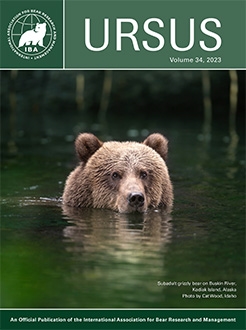Identifying factors that influence human–wildlife conflict and people's attitudes toward carnivores can help managers mitigate conflicts and improve wildlife management. In this study, we used a questionnaire and conducted 230 interviews to evaluate some aspects of conflicts between local communities and brown bears (Ursus arctos) in Mazandaran Province in the Alborz Mountains in northern Iran between 2009 and 2019. The questionnaire included the variables age group, education level, occupation, and source of income as well as experience with attacks and damage to agricultural properties, livestock, and beehives. Damage by brown bears to orchards was reported by 44% of respondents and to beehives by 32%; these were the main conflict causes. Brown bear attacks on humans occurred while humans were hunting, sheepherding, and collecting medicinal plants. About 30% of respondents were opposed to the presence of bears in nature because of economic losses they suffered due to bears, and people's attitudes toward predators were mainly influenced by economic factors. Understanding different patterns of human–brown bear conflicts can help reduce dangerous encounters and, consequently, is essential for informing conflict mitigation measures in the area. Moreover, education programs on brown bear behavior and implementation of compensation methods can reduce human–brown bear conflicts.
BioOne.org will be down briefly for maintenance on 17 December 2024 between 18:00-22:00 Pacific Time US. We apologize for any inconvenience.
How to translate text using browser tools
15 May 2023
Human–brown bear conflicts in the North of Iran: Implication for conflict management
Marya Madadi,
Bagher Nezami,
Mohammad Kaboli,
Hamid Reza Rezaei,
Alireza Mohammadi
ACCESS THE FULL ARTICLE

Ursus
Vol. 2023 • No. 34e2
May 2023
Vol. 2023 • No. 34e2
May 2023
brown bear
compensation
Conflicts
Iran
local communities
people's attitudes
Questionnaire




